During their first week on campus, Energy Graduate Group students embark on Power Trip — an immersive orientation program designed to introduce them to the diverse landscape of energy research and policy work at UC Davis and beyond. Through engaging discussions with experts from academia, industry, government, and public interest groups, students gain invaluable insight into the cutting-edge energy initiatives shaping the Sacramento and Bay Area. Power Trip is made possible through the generous support of individual donors, whose contributions help cultivate the next generation of energy leaders.
Tuesday, September 17th
Matthew Fulton
On our first day of Power Trip 2024, we began with a brief introduction from the EGG chair, Dr. Alan Jenn, followed by an Ice Breaker activity facilitated by fellow EGG student, Nikunj Bhartia. The Ice Breaker activity was interesting, to say the least, and involved breaking into smaller groups to collaborate on a mural depicting our visions of a clean energy future and presenting our work to the room. Initially, there was a sense of apprehension, but people quickly came out of their shells and began contributing their unique perspectives to the drawings.
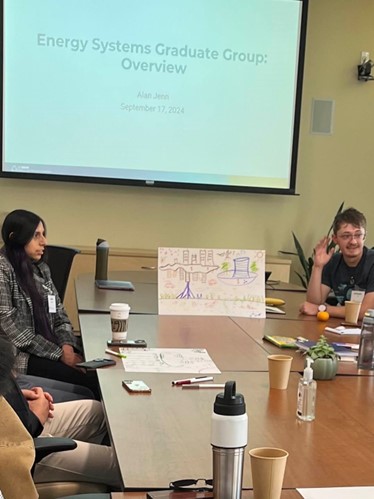
After the activity, Dr. Alan Meier gave us an introduction to himself and his research. He pointed out that, typically, when people think of clean energy initiatives, they tend to focus on the supply side. However, reducing or improving the efficiency of demand can also help us make significant strides in a clean energy economy.
The morning continued with an overview of the EGG program by Dr. Jenn followed by a Q&A session and lunch. After lunch, we headed across the street to the Western Cooling Efficiency Center for a tour led by Curtis Harrington. Curtis began by explaining The Center’s research on evaporative cooling, followed by a tour of their lab, where commercial refrigeration units serve as controlled environments for their research.
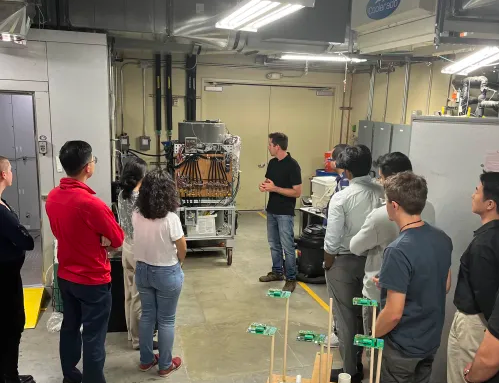
Upon returning to the main conference room, we participated in a lightning session introducing us to various programs available and important to us as EGG students. The presenters included Sarah Outcault, Colin Murphy, Sabbie Miller, Gil Tal, Alex Malm, and Keith Taylor. The programs and research covered topics ranging from engineering & design, politics, sociology, and economic development, ensuring there was something for everyone. Lastly, Dr. Kurt Kornbluth gave a lively talk about himself and the research he facilitates at D-Lab.
The day concluded with Taco Tuesday at Ben Finkelor’s home, which is uniquely situated in a co-housing community with a shared kitchen & dining area, allowing him to graciously host this year’s EGG cohort.
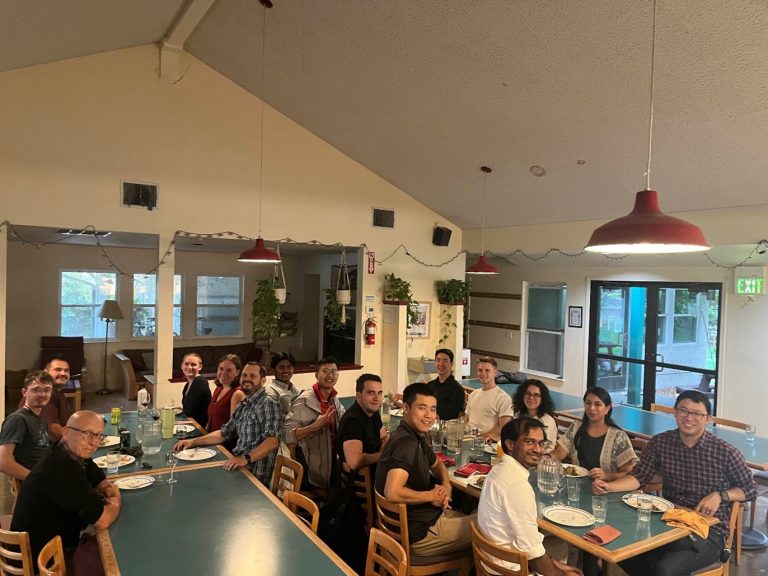
Wednesday, September 18th
Ryan Callahan
Day 2 of Power Trip provided an intimate look at two of the most influential players in Northern California’s clean energy transition: PG&E and MCE. From the “gorgeous” route down I-80 to the bustling PG&E headquarters, we learned about how innovation and sustainability are transforming the energy sector.
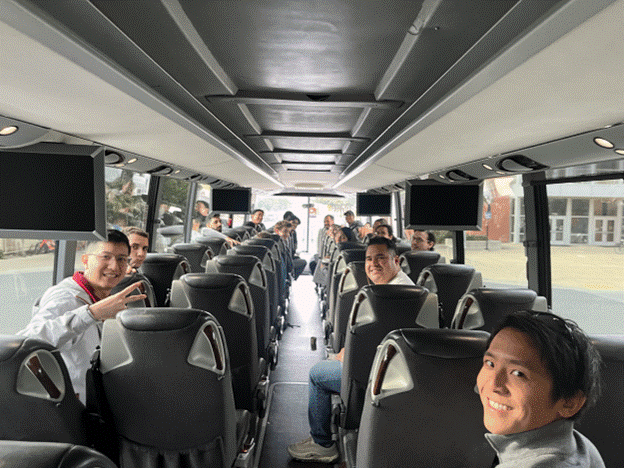
PG&E Headquarters: Empowering the Energy Transition
We started our tour at PG&E’s Oakland, California headquarters, where we were immersed in the utility’s ambitious goal of serving its sizable customer base while emitting zero carbon. PG&E is especially committed to developing the infrastructure for electric vehicles (EVs) in order to support California’s electrification initiative. We met several PG&E leaders, including Margaret Murphy, Sr. Director of Load Management Solutions, Jeffrey Brown, Principal Strategic Analyst, and Vanessa Bryan, Sr Manager, Undergrounding CX & Engagement to discuss PG&E’s overarching mission, EV infrastructure and investment goals, Climate goals, and undergrounding of electricity distribution for wildfire resiliency.
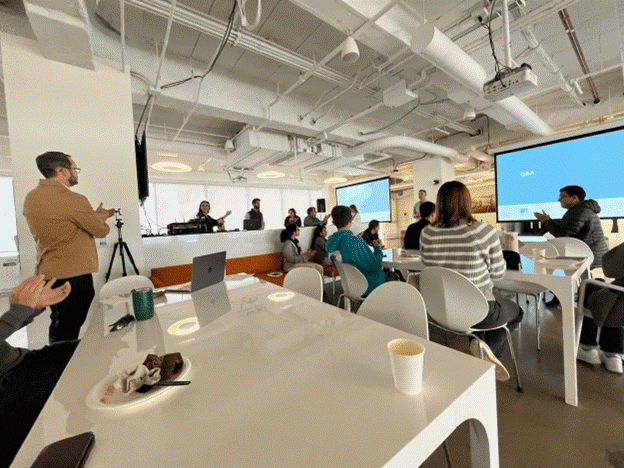
A noteworthy topic of conversation followed PG&E’s undergrounding initiative. Installing underground electrical distribution lines is a crucial step in building wildfire resistance in a state where wildfires are becoming more frequent. This project is evidence of PG&E’s efforts to guarantee a more secure and dependable energy infrastructure in the future.
To cap our time in Oakland, we also had the opportunity to network with UC Davis alumni now working at PG&E; while enjoying a Mediterranean-inspired lunch.
MCE Solar One: Turning Brownfields into Bright Futures
After another scenic journey through the Bay Area, we arrived at MCE Solar One, a solar farm located on a brownfield and capped landfill in Richmond. Our tour guide, Jenna Tenney, gave us an overview of the power plant’s capabilities and history and the advantages the Community Choice Aggregator (CCA) offers the neighborhood.
MCE has been at the forefront of lowering greenhouse gas (GHG) emissions through local, renewable energy as the first CCA in California. The solar farm produces 10.5 MW of power annually, enough to power 4,000 homes.
One of the unique challenges MCE faced was building on a capped landfill, which is inherently uneven. With innovative engineering, the landfill now not only hosts solar panels but also captures methane gas, turning a once harmful waste product into a leveraged energy resource.
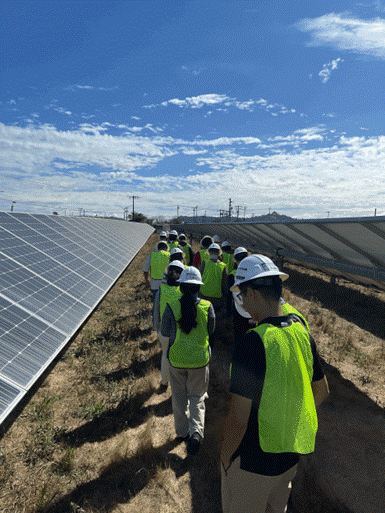
MCE Solar One’s location in the foggy Bay Area also benefits from natural conditions—the fog keeps the panels clean which eliminates the need for frequent panel washing. The solar farm has proven remarkably resilient, with only one major outage during the 2020 fire season.
Thursday, September 19th
Jameel Jamhar
We kicked off Day 3 of the Power Trip bright and early at 8:30 AM, departing from West Village with excitement in the air. Our first stop was the Putah Creek Solar Farm in Winters, owned by Valley Clean Energy (VCE), which serves Yolo County. Dan Norton, co-founder and president of Summit Energy, welcomed us and gave a tour of the 3MW solar plant, which also includes a lithium-ion phosphate battery storage system. As we walked through the farm, Dan shared fascinating details about the technical aspects of the project, including the rated capacity of each solar panel and the use of bifacial panels on the 450kW section of the plant.
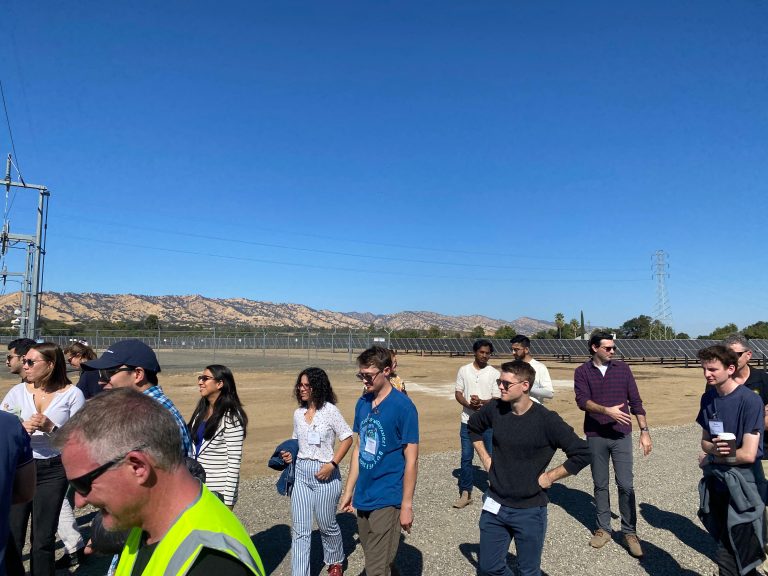
The next stop on our tour was the California Lighting Technology Center, where Nicole Hathaway, Director of Technical Communications, greeted us. This portion of the journey took an inventive turn when we went into a room where the lighting changed to red, blue, green, and amber hues according to how we felt. Additionally, the Honda Smart Home, a futuristic marvel that incorporates state-of-the-art energy-saving technologies was shown to us.
Lunch followed at CLTC, where we had our choice of carnitas, chicken, or tofu bowls, delicious and just what we needed before heading to our next stop.
In the afternoon, we made our way to SMUD (Sacramento Municipal Utility District) for an insightful session on their popular apprenticeship program and their work with substations and energy storage systems. The highlight was learning about iron flow batteries, a new technology that could potentially replace traditional lithium-ion batteries and change the future of energy storage. We were lucky enough to meet Lora Anguay, SMUD’s first Chief Zero Carbon Officer. Lora walked us through the challenges and opportunities in the fight for sustainable energy, emphasizing the crucial role the next few years will play in shaping our energy future.
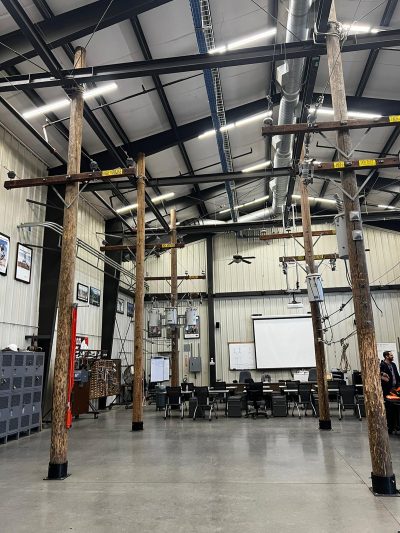
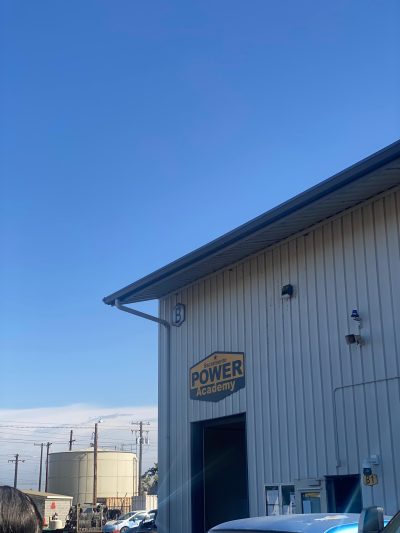
Our final destination of the day was the campus district heating system, where Superintendent Joe Yonkoski provided a behind-the-scenes tour. We learnt how natural gas-powered boilers make steam. The tour concluded with a glimpse into the control center, which monitors and manages the campus’s complete heating and cooling
system.
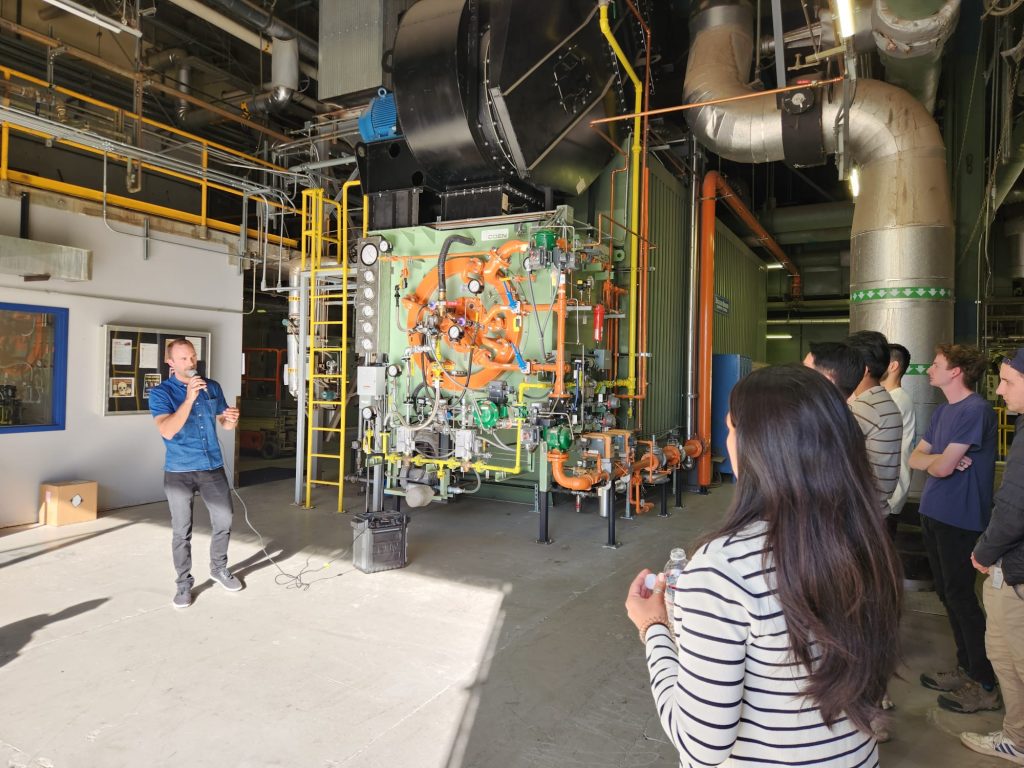
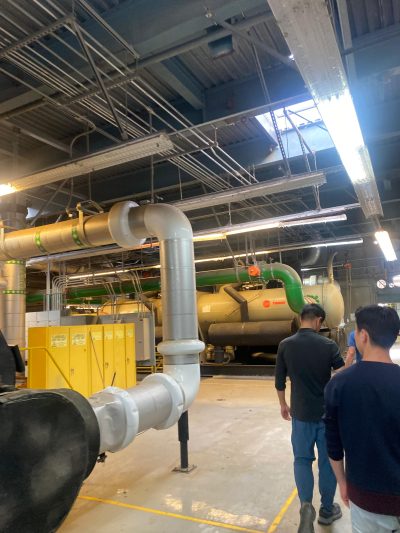
Friday, September 20th
Teresa Linares
Friday was the last and shortest day of the PowerTrip. However, some might say that it was the most interesting day of them all. The first thing on the agenda was the California Energy Leadership Panel, where the EGGs met with representatives of various governmental and non-governmental organizations that develop and promote energy policies in California. In the EEI, the EGGs could be found conversing with Sandy Berg, from Pacific Resource Recovery; Sydney Vergis, the Deputy Executive Officer of the California Air Resources Board; Darci Houck, commissioner of the California Public Utilities Commission; and Drew Bohan, executive director of the California Energy Commission. Each of them gave a quick presentation on the goals and courses of actions of their respective organizations, and then the EGGs had the chance to ask questions and engage in a distended discussion on various energy policy-related topics.
After a short break, the EGGs participated in a very interesting conversation, via Zoom meetings, with Ralph Cavanagh, chair of the Board of Advisors of the EEI. Cavanagh gave the students some food for thought, as he emphasized the important role that energy efficiency has always played in the transition to a cleaner but bigger. He also gave some interesting insights on how the electric grid is operated and divided along the US territory and the challenges it must face, specially focusing on the West Coast. Last but not least, it was discussed how natural gas utilities should also be at the center of this energy transition, just as electric utilities are.
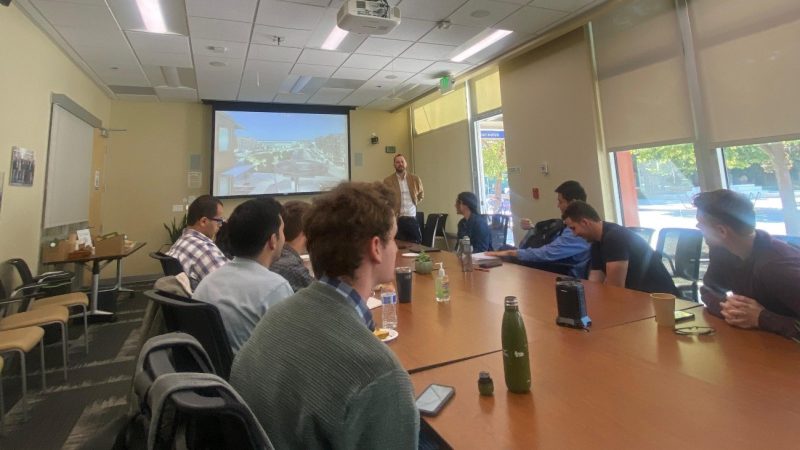
The PowerTrip ended on a high note, with this short but intense Friday morning, and definitely left some EGG students longing for more.

